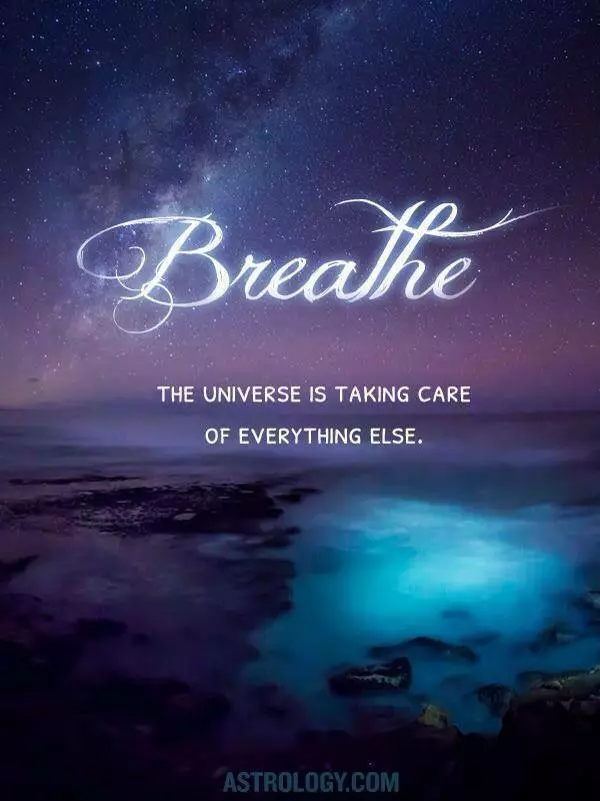
#Kriya #Yoga Practices and Techniques
...............................................................
Kriya Yoga is described by its practitioners as the ancient Yoga system revived in modern times by Mahavatar Babaji through his disciple Lahiri Mahasaya, c. 1861 and later Sri Yukteswar Giri and his disciple Paramahansa Yogananda.
To Westerners, it was brought into popular awareness through Paramahansa Yogananda's book Autobiography of a Yogi and through Yogananda's introductions of the practice in the west since 1920 and India since 1917.
........................................
"Offering the inhaling #breath into the exhaling breath and offering the exhaling breath into the inhaling breath, the yogi neutralizes both breaths; thus he releases prana from the heart and brings life force under his control."
—The Bhagavad Gita IV:29
......................................
“The yogi arrests decay in the body by securing an additional supply of #prana (life force) through quieting the action of the lungs and heart; he also arrests mutations of growth in the body by control of apana (eliminating current). Thus neutralizing decay and growth, the yogi learns life-force control."
......................................
"That meditation-expert (muni) becomes eternally free who, seeking the Supreme Goal, is able to withdraw from external phenomena by fixing his gaze within the mid-spot of the eyebrows and by neutralizing the even currents of prana and apana [that flow] within the nostrils and lungs; and to control his sensory mind and intellect; and to banish desire, fear, and anger.”
.......................................
"Kriya Yoga consists of body discipline,
mental control, and meditating on #Aum."
—Yoga Sutras II:1
......................................
"When the breath stops effortlessly, without either rechaka (exhalation) or puraka (inhalation), that is called Kevala Kumbhaka."—Hatha-Yoga Pradipika, 11:73.
.....................................
"The aspirant who can perform Kevali Kumbhaka, he only is the true knower of Yoga."—Gheranda Samhita, V:95.
.....................................
"One who is adept in Kevala Kumbhaka, which has no rechaka and puraka, he has nothing unattainable in the three worlds."—Siva Samhita 111:46-47.
....................................
A muni—he who holds liberation as the sole object of life and therefore frees himself from longings, fears, and wrath—controls his senses, mind, and intelligence and removes their external contacts by making even the currents of prana and apana that manifest (as inhalation and exhalation) in the nostrils. He fixes his gaze at the middle of the two eyebrows. Such a muni wins complete emancipation.
— The Bhagavad Gita V:27-28
...................................
Excerpts from Autobiography of a Yogi
by Paramahansa Yogananda
"Kriya Yoga is a simple, psychophysiological method by which human blood is decarbonated and recharged with #oxygen. The atoms of this extra oxygen are transmuted into life current to rejuvenate the brain and spinal centers. By stopping the accumulation of venous blood, the yogi is able to lessen or prevent the decay of tissues. The advanced yogi transmutes his cells into energy. Elijah, Jesus, Kabir, and other prophets were past masters in the use of Kriya or a similar technique, by which they caused their bodies to materialize and dematerialize at will.
Kriya is an ancient science. Lahiri Mahasaya received it from his great guru, Babaji, who rediscovered and clarified the technique after it had been lost in the Dark Ages. Babaji renamed it, simply, Kriya Yoga."
"The Kriya Yoga that I am giving to the world through you in this nineteenth century," Babaji told Lahiri Mahasaya, "is a revival of the same science that Krishna gave millenniums ago to Arjuna; and that was later known to Patanjali and Christ, and to St. John, St. Paul, and other disciples.”
.................................
and quotes on Kriya Yoga Pranayama and Meditation Techniques by Yogananda
"Liberation can be attained by that pranayama which is accomplished by disjoining the course of inspiration and expiration.”
—Yoga Sutras II:49
"Kriya Yoga is an instrument through which human evolution can be quickened," Sri Yukteswar explained to his students. "The ancient yogis discovered that the secret of cosmic consciousness is intimately linked with breath mastery. This is India's unique and deathless contribution to the world's treasury of knowledge. The life force, which is ordinarily absorbed in maintaining heart action, must be freed for higher activities by a method of calming and stilling the ceaseless demands of the breath."
Pranayama 'control of prana' or energy/life-force that sustains life in the body] is the primary art of realization. You cannot find God unless you can master the mortal breath. Breath ties the mind to the sense plane. As your breath becomes calm, your mind goes within. Breathlessness is the way to God. Practice pranayama and you will know how to meditate—how to perceive God and be one with Him. Kriya Yoga is the highest pranayama technique."
"A devotee's life is never all roses and honey. God tests each one to determine the degree of his devotion. For many latent desires of the past remain buried in the spinal region ready to spring forth when conditions are right. These tendencies must be burned in the fire of meditation. The current which is revolved around the spine while practicing Kriya is so intense that it literally bakes the seeds of karma. So if you practice Kriya regularly, and with ever-increasing devotion for God you will reach the goal in the end."
"As Self-Realization students know, when your spiritual eye is open in meditation, you see the astral light of the spiritual eye as a ring of golden radiance encircling a sphere of opalescent blue, and at the center, a five-pointed silvery-white star. If you can penetrate that star, you are immediately in God's kingdom in the astral world. So learn to concentrate and meditate deeply. Though the spiritual man experiences the physical world and works through the instruments of the physical body, he does not identify himself with any sensation of the body; he is always centered in the spiritual eye. I never take my mind away from there, no matter what I am doing."
“My guru, Sri Yukteswar, liked a chant that I have translated, two lines from which go, ‘Pranayama be thy religion. Pranayama will give thee salvation.’“Pranayama means control of the energy in the body, and its direction upward through the spine to the brain and to the Christ consciousness between the eyebrows. This alone is the pathway of awakening. It isn’t a matter of dogma or belief. It is simply the way we were all made by God.“The consciousness enters the body by way of the brain and the spine. When the sperm and ovum unite to create the physical body, they do so at what becomes the medulla oblongata, at the base of the brain.“From this medulla, the life force moves out into the brain, down the spine and into the nervous system, then on to the muscles, etc., creating the body.“The way out of the body, then, is to reverse this process. The difficulty in doing so lies in the fact that the life force is already conditioned by birth to continue its outward direction–through the senses and onward to the environment as it is perceived through the senses. Thus, we think to possess the world and to enjoy it through the body.“We can never experience anything outside ourselves, however, except vicariously, as the senses report their impressions to the brain. We may try to expand our understanding of the world by study, or our enjoyment of it through sense pleasures. The fact remains, we can never know anything except through the medium of the senses, so long as the life force remains trapped in the body.“There is a way out, however. It is for the life-force to merge with the cosmic energy; for the consciousness to merge in the infinite consciousness.“The way to accomplish this end is to withdraw the life force from the senses, and centre it in the spine; to direct it upward through the spine to the brain, and thence out through the Christ centre between the eyebrows.“The ego is centred in the medulla oblongata. This is the negative pole of self-consciousness. The positive pole is situated at the Christ centre. Concentration at this centre–in the spiritual eye, the seat of spiritual vision–projects the consciousness beyond the ego into Infinity.“The spine is the highway to the Infinite. Your own body is the temple of God. It is within your own self that God must be realised. Whatever places of pilgrimage you visit outwardly, and whatever outward rituals you perform, the ultimate ‘pilgrimage’ must be within. And the ultimate religious rite must be the offering of your life-force on the altar of inner God-communion.“That was why Jesus said, ‘Destroy this temple, and in three days I will raise it up.’ ‘He spake,’ the Bible adds, ‘of the temple of his body.’ (John 2:19,21)“This is the path of Kriya Yoga.”
"It is not the technique of meditation alone that will bring you freedom; your character must be strong and pure. Your whole life and behavior must be in harmony with the laws of truth. The first rules of the yoga path of meditation are
& 2. You should follow: purity, evenminded contentment, introspection (self-study), devotion to God, and self-discipline. To progress in meditation, you must be working to free yourself from pride, wrath, greed, jealousy. [yama & niyama]
The body must be under your control in order to meditate deeply. [asana]
Then comes pranayama (control of prana or life force), techniques for calming the body and mind, breath and heartbeat. Pranayama is the primary art of realization. You cannot find God unless you can master the mortal breath. Breath ties the mind to the sense plane. As your breath becomes calm, your mind goes within. Breathlessness is the way to God. [Kriya Yoga is the highest pranayama technique.]
The consciousness is turned within, away from the senses. [pratyahara]
When your attention is freed from distractions of breath and body and outer sensations, it is able to focus single-pointedly on God. [dharana]
In the inner stillness, one hears the mighty voice of Spirit as Aum... As you listen to and merge in that great, comforting Cosmic Vibration, the consciousness expands with it into all space. [dhyana]
And as the concentration and perception of meditation becomes deeper, one reaches the ultimate state, samadhi, in which the meditator, the process of meditation, and the object of meditation (God) merge in oneness. In samadhi, you know by direct experience that God and you are One. [samadhi]"
.........................
Excerpts from The Holy Science by Sri Yukteswar
I:1 Parambrahma (Spirit or God) is everlasting, complete, without beginning or end. It is one, indivisible Being.
I:2 In It (Parambrahma) is the origin of all knowledge and love, the root of all power and joy.
I:3 Parambrahma causes creation, inert Nature (Prakriti), to emerge. From Aum (Pranava, the Word, the manifestation of the Omnipotent Force), come Kala, Time; Desa, Space; and Anu, the Atom (the vibratory structure of creation).
I:4 The cause of creation is Anu or the Atoms. En masse they are called Maya or the Lord's illusory power; each individual Anu is called Avidya, Ignorance.
I:5 The Omniscient Love aspect of Parambrahma is Kutastha Chaitanya. The individual Self, being Its manifestation, is one with It.
I:6 The Atom, under the influence of Chit (universal knowledge) forms the Chitta or the calm state of mind, which when spiritualized is called Buddhi, Intelligence. Its opposite is Manas, Mind, in which lives the Jiva: the self with Ahamkara, Ego, the idea of separate existence.
I:7-10 Chitta, the spiritualized Atom, in which Ahamkara (the idea of separate existence of Self) appears, has five manifestations (aura electricities).
They (the five aura electricities) constitute the causal body of Purusha.
The five electricities, Pancha Tattwa, from their three attributes, Gunas—Sattwa (positive), Rajas (neutralizing), and Tamas (negative)—produce Jnanandriyas (organs of sense), Karmendriyas (organs of action), and Tanmatras (objects of sense).
These fifteen attributes plus Mind and Intelligence constitute the seventeen "fine limbs" of the subtle body, the Lingasarira.
I:11-12 The aforesaid five objects, which are the negative attributes of the five electricities, being combined produce the idea of gross matter in its five forms: Kshiti, solids; Ap, liquids; Tejas, fire; Marut, gaseous substances; and Akasa, ether.
These five forms of gross matter and the aforesaid fifteen attributes, together with Manas, Mind, sense consciousness; Buddhi, discriminative Intelligence; Chitta, the Heart or power of feeling; and Ahamkara, the Ego, constitute the twenty-four basic principles of creation.
I:13 This universe is differentiated into fourteen spheres, seven Swargas and seven Patalas.
I:14 Purusha is covered by five koshas or sheaths.
I:15-16 Just as the objects seen in our dreams are found, when we awake, to be insubstantial, so our waking perceptions are likewise unreal—a matter of inference only.
I:17 What is needed is a Guru, a Savior, who will awaken us to Bhakti (devotion) and to perceptions of Truth.
I:18 Emancipation (Kaivalya) is obtained when one realizes the oneness of his Self with the Universal Self, the Supreme Reality.
. . . . . . . . . . . . . . . . . . . . . . .
II:1 Hence there is desire for emancipation.
II:2 Liberation is stabilization of Purusha (jiva, soul) in its real Self.
II:3 Then there is cessation of all pain and the attainment of the ultimate aim (true fulfillment, God realization).
II:4 Otherwise, birth after birth, man experiences the misery of unfulfilled desires.
II:5-6 Troubles are born from Avidya, Ignorance. Ignorance is the perception of the nonexistent, and the nonperception of the Existent.
II:7-12 Avidya, Ignorance, having the twofold power of polarity, manifests as egoism, attachment, aversion, and (blind) tenacity.
The darkening power of Maya produces egoism and (blind) tenacity; the polarity power of Maya produces attachment (attraction) and aversion (repulsion).
Egoism results from a lack of discrimination between the physical body and the real Self.
Tenacity is a result of natural conditioning (belief in Nature and her laws as final, instead of belief in the all-causative powers of the Soul).
Attachment means thirst for the objects of happiness.
Aversion means desire for the removal of the objects of unhappiness.
II:13 The root of pain is egoistic actions, which (being based on delusions) lead to misery.
II:14-15 Man's purpose is complete #freedom from unhappiness.
Once he has banished all pain beyond possibility of return, he has attained the highest goal.
II:16-21 Existence, consciousness, and bliss are the three longings (of the human heart).
Ananda, bliss, is the contentment of heart attained by the ways and means suggested by the Savior, the Sat-Guru.
Chit, true consciousness, brings about the complete destruction of all troubles and the rise of all virtues.
Sat, existence, is attained by realization of the permanency of the soul.
These three qualities constitute the real nature
of man.
All desires being fulfilled, and all miseries removed, the achievement of Paramartha (the highest goal) is made.
II:22 All fulfillments of his nature attained, man is not merely a reflector of divine light but becomes actively united with Spirit. This state is Kaivalya, oneness.
. . . . . . . . . . . . . . . . . . . . . . .
Yajna, sacrifice, means penance (Tapas), deep study (Swadhyaya), and the practice of meditation on Aum (Brahmanidhana).
Penance is patience or evenmindedness in all conditions (equanimity amidst the essential dualities of Maya; cold and heat, pain and pleasure, etc.).
Swadhyaya consists of reading or hearing spiritual truth, pondering it, and forming a definite conception of it.
(Meditation on) Pranava, the divine sound of Aum, is the only way to Brahman (Spirit), salvation.
III:5-6 Aum is heard through cultivation of Sraddha (heart's natural love), Virya (moral courage), Smriti (memory of one's divinity), and Samadhi (true concentration).
Sraddha is intensification of the heart's natural love.
III:7-8 Moral courage (Virya) arises from Sraddha, directing one's love toward the guru, and from affectionately following his instructions.
III:9-11
Moral courage is strengthened by observance of Yama (morality or self-control) and Niyama (religious rules).
Yama comprises noninjury to others, truthfulness, nonstealing, continence, and noncovetousness.
Niyama means purity of body and mind, contentment in all circumstances, and obedience (following the instructions of the guru).
III:12-18 Hence bondage disappears.
The eight bondages or snares are hatred, shame, fear, grief, condemnation, race prejudice, pride of family, and smugness.
(Removal of the eight bondages) leads to magnanimity of heart.
Thus one becomes fit to practice Asana, Pranayama, and Pratyahara; and to enjoy the householder's life (by fulfilling all one's desires and so getting rid of them).
Asana means a steady and pleasant posture of the body.
Pranayama means control over prana, life force.
Pratyahara means withdrawal of the senses from external objects.
III:19-22 Smriti, true conception, leads to knowledge of all creation.
Samadhi, true concentration, enables one to abandon individuality for universality.
Hence arises Samyama ("restraint" or overcoming the egoistic self), by which one experiences the Aum vibration that reveals God.
Thus the soul (is baptized) in Bhakti Yoga (devotion). This is the state of Divinity.
III:24 In the dark state of the heart, man harbors misconceptions (about everything). This state is a result of Avidya, Ignorance, and produces a Sudra (a man of the lowest caste). He can grasp only ideas of the physical world. This state of mind is prevalent in Kali Yuga, the Dark Age of a cycle.
III:25-26 Passing beyond the first stage in Brahma's plan, man strives for enlightenment and enters the natural Kshatriya (warrior) caste.
He is propelled (by evolutionary forces) to struggle (for truth). He seeks a guru and appreciates his divine counsel. Thus a Kshatriya becomes fit to dwell in the worlds of higher understanding.
III:27 The worlds or Lokas of creation are seven: Bhu, Bhuvar, Swar, Mahar, Jana, Tapo, and Satya. (This earth, and the "earthy" stage of man's consciousness, are called Bhuloka.)
III:28 Entering Bhuvarloka ("air" or "the world of becoming") man becomes a Dwija or "twice born." He comprehends the second portion of material creation—that of finer, subtler forces. This state of mind is prevalent in Dwapara Yuga.
III:29 In Swarloka ("heaven") man is fit to understand the mysteries of Chitta, the magnetic third portion of material creation. He becomes a Vipra (nearly perfect being). This state of mind is prevalent in Treta Yuga.
III:30 Through true repentance man reaches Maharloka (the "great world"). No longer subject to the influence of ignorance, Maya, he attains a clean heart. He enters the natural caste of the Brahmanas ("knowers of Brahma"). This state of mind is prevalent in Satya Yuga.
III:31-32 Not merely reflecting but manifesting Spiritual Light, man rises to Janaloka, the kingdom of God.
Then he passes into Tapoloka, the sphere of Kutastha Chaitanya.
Abandoning the vain idea of his separate existence, he enters Satyaloka, wherein he attains the state of final release or Kaivalya, oneness with Spirit.
In this way, when the heart becomes purified, it no longer merely reflects but manifests Spirit.
. . . . . . . . . . . . . . . . . . . . . . . . . . . .
Adeptship is achieved by purification of man's three bodies. It is also attainable through the grace of the guru.
Purification comes through Nature, penance, and mantras.
Through Nature there is purification of dense matter (the physical body); through penan.






